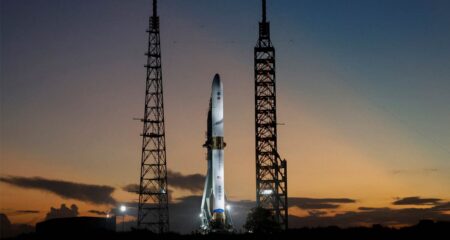 It sounds thoroughly implausible: a technology that could replicate the chemistry of the stars, unleash nearly unlimited clean energy and safely power the world for centuries.
It sounds thoroughly implausible: a technology that could replicate the chemistry of the stars, unleash nearly unlimited clean energy and safely power the world for centuries.
Yet sustainable nuclear fusion, long hypothesised, took a step closer to reality this month. Scientists at the National Ignition Facility, part of the Lawrence Livermore National Laboratory, announced that they had produced about 10 quadrillion watts of fusion power after blasting a hydrogen capsule with an array of laser beams. The burst lasted only a fraction of a second. But it offered significant new evidence that harnessing fusion energy could one day be feasible.
Celebration isn’t in order just yet, of course. Hype has plagued the field for decades (fusion energy, the old joke goes, is just 20 years away and always will be). And the remaining challenges to a workable reactor are daunting. Even the yield produced at the NIF — about 70% of the experiment’s energy input — is still a long way from a viable energy source.
Yet there are reasons for optimism. One is that other innovations in recent years are likely to speed progress in fusion. Advances in high-speed computing, artificial intelligence, superconducting magnets, 3D printing, materials science and more all should help overcome challenges to a workable fusion device. The breakthrough at NIF, in fact, came about in large part due to better computer modelling.
Surging interest
Surging private sector enthusiasm should also help. About two dozen companies are now engaged in fusion projects, with investors committing some US$300-million to them last year alone, according to BloombergNEF. Several have projects well under way. General Fusion, funded partly by Jeff Bezos, plans to break ground on a demonstration plant next year. Commonwealth Fusion Systems, backed by Bill Gates, expects to demonstrate net energy gain by 2025.
Even granting that such goals may prove optimistic, the benefits to this work could be profound. Harnessing fusion could one day mean an effectively limitless energy source. It would produce no long-term waste, emit no greenhouse gases and pose no risk of meltdowns. US President Joe Biden’s goal of reaching net-zero emissions by 2050 — implausible on current trends — looks much more realistic with such projects in the mix. It’s little wonder fusion is often called the “holy grail” of energy production.
Unlike the cup of Arthurian legend, however, this one is subject to some worldly constraints.
 One is technological. It’s no exaggeration to say that building a workable fusion reactor is one of the most complex challenges ever undertaken. Immense technical problems still need solving. Yet federal funding for domestic fusion research has declined by 40% in real terms over the past four decades. An influx in last year’s spending bill should help, but a longer-term commitment is needed to overcome science and engineering hurdles, build a skilled workforce, and lure more talented researchers to US labs.
One is technological. It’s no exaggeration to say that building a workable fusion reactor is one of the most complex challenges ever undertaken. Immense technical problems still need solving. Yet federal funding for domestic fusion research has declined by 40% in real terms over the past four decades. An influx in last year’s spending bill should help, but a longer-term commitment is needed to overcome science and engineering hurdles, build a skilled workforce, and lure more talented researchers to US labs.
Money presents a second challenge. Realistically, no company is going to build a fusion reactor without huge new investments. As two recent reports from advisory bodies have suggested, the US congress could help by aiming to produce a pilot plant within two decades. With safeguards in place, public-private partnerships with fusion companies could help accelerate this process, control costs and mitigate risks. Nasa’s successful collaboration with SpaceX — which hugely reduced the cost of spaceflight in less than a decade — offers a useful model.
Read: Investors get serious about nuclear fusion
A final impediment is regulation. Subjecting fusion projects to the same kinds of licensing requirements that apply to traditional fission reactors would impose serious delays, raise costs and impede investment in otherwise promising companies. Given that fusion is a far safer technology, such rules would make little sense — especially at a time when the government is otherwise making zero-emissions technology one of its highest priorities.
As the world has learnt over the past few decades, there are no magic solutions to climate change. Fusion energy will be no exception. Amid the dreary headlines, though, advances like this one amount to real progress — and, if governments lend support where they should, real cause for hope. — (c) 2021 Bloomberg LP




